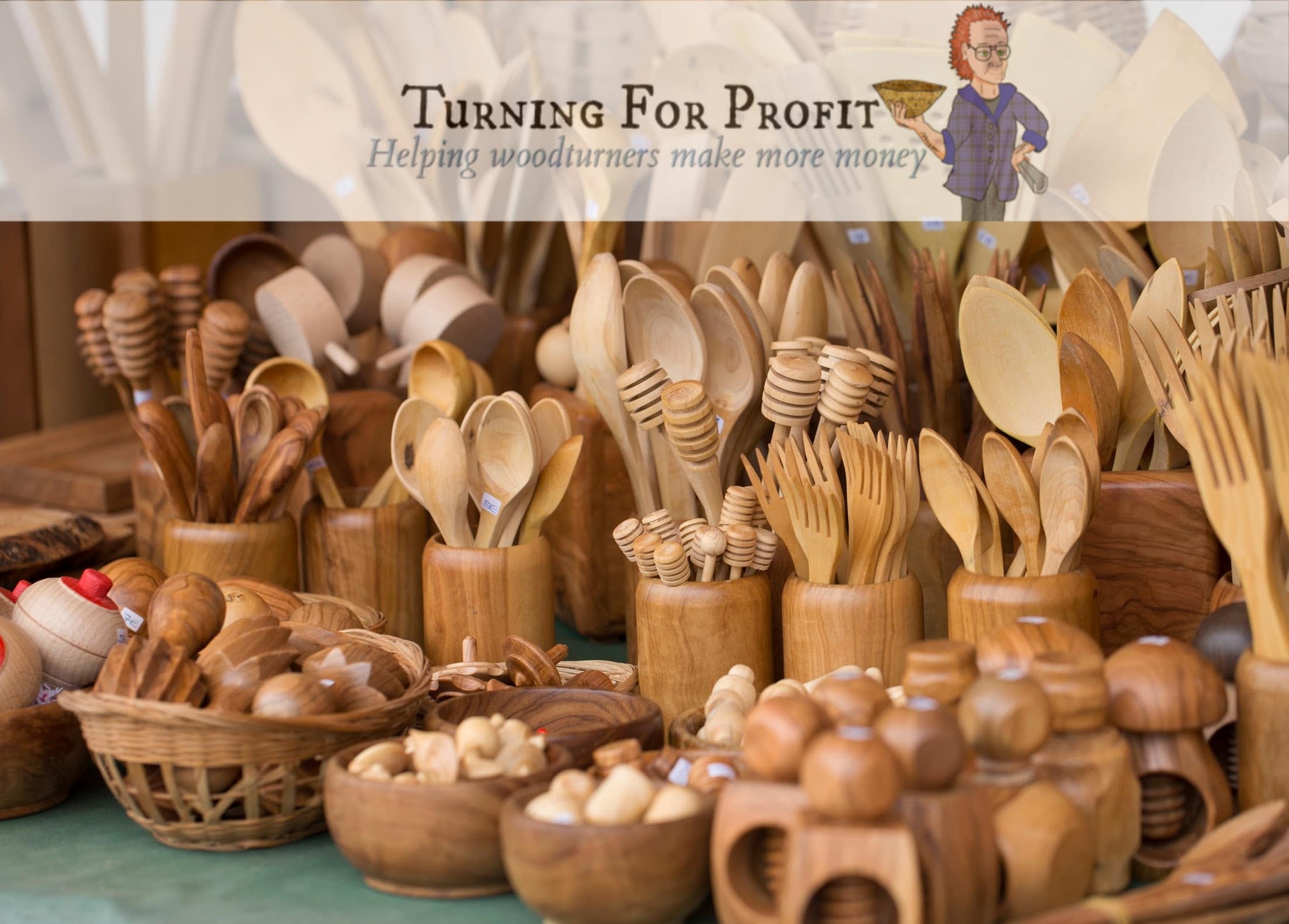Are you curious about the profitability of wood turning? Let’s dive into this fascinating world where creativity and craftsmanship meet potential financial gains. Wood turning, the art of shaping wood on a lathe, has captured the attention of hobbyists and professionals alike. But is wood turning profitable? In this article, we’ll explore the possibilities and uncover the secrets to success in this rewarding craft.
Wood turning offers an exciting opportunity to unleash your imagination while potentially earning a profit. With a lathe, some wood, and the right tools, you can transform raw materials into beautiful and functional objects. From elegant bowls and vases to intricate pens and jewelry, the possibilities are endless. But is there money to be made in this craft? Let’s find out!
In the world of wood turning, success and profitability depend on a combination of factors. Your skill level, the quality of your work, and your ability to market and sell your creations all play a crucial role. By honing your craft, targeting the right audience, and adopting effective business strategies, you can carve out a profitable niche in the wood turning industry. So, let’s roll up our sleeves and explore the exciting world of wood turning together!

Is Wood Turning Profitable?
Wood turning is a popular craft that involves shaping wood using a lathe. Many people are drawn to wood turning for its artistic expression and the satisfaction of creating unique pieces. But is it also a profitable endeavor? In this article, we will explore the potential profitability of wood turning as a business or side hustle. We will delve into the various factors that can determine the profitability of wood turning and provide insights into how to make it a successful venture.
The Market for Wood Turned Products
Wood turned products have a wide market appeal. From functional items like bowls, vases, and pens to decorative pieces such as ornaments and sculptures, there is a demand for unique and handmade wooden items. The market for wood turned products is diverse, ranging from individual customers to galleries, gift shops, and online platforms.
One of the key factors influencing the profitability of wood turning is the ability to identify and tap into the right target market. Understanding consumer preferences and trends is crucial for success. By staying up to date with current designs, utilizing social media to showcase your work, and participating in craft shows and local markets, wood turners can attract customers and generate sales.
Factors Affecting Profitability in Wood Turning
While wood turning can be a profitable venture, it is essential to consider several factors that can impact the bottom line. Here are some key elements to keep in mind:
1. Skill Level: The level of expertise and craftsmanship plays a significant role in the profitability of wood turning. Developing advanced skills and techniques allows wood turners to create high-quality, one-of-a-kind pieces that can command premium prices.
2. Cost of Materials: The type and quality of wood used are factors that directly affect profitability. Some woods are more expensive and may require additional treatment or special tools, which can increase production costs. It is essential to factor in these expenses when pricing the final products.
3. Pricing Strategy: Determining the right price for wood turned products can be challenging. Wood turners need to consider the time, effort, and materials invested while also remaining competitive in the market. Conducting market research, analyzing competitors’ pricing, and calculating costs are essential steps to establish a profitable pricing strategy.
4. Time Investment: Wood turning requires time and patience. The more intricate and detailed the piece, the longer it takes to create. Wood turners should consider the time investment when determining pricing and production capacity. Balancing efficiency without compromising quality is crucial for profitability.
5. Marketing and Promotion: Effective marketing and promotion are crucial for success in any business, including wood turning. Utilizing online platforms, social media, and attending craft shows and exhibitions can help reach a wider audience and increase sales. Investing time and effort in marketing efforts can lead to greater profitability.
6. Branding and Differentiation: Building a strong brand and offering unique products can set wood turners apart from the competition. Developing a recognizable style, incorporating personal touches, and ensuring consistent quality can help attract loyal customers and command higher prices.
7. Costs and Overhead: Wood turning as a business incurs various costs, such as tools, equipment maintenance, workspace, and utilities. It is essential to factor in these expenses to determine the overall profitability. Keeping overhead costs manageable and optimizing efficiency can contribute to higher profitability.
In conclusion, wood turning can be a profitable venture with the right combination of craftsmanship, market knowledge, pricing strategy, and marketing efforts. Building a strong brand, offering unique products, and understanding customer preferences can contribute to increased sales and profitability. However, it is essential to carefully consider the various factors mentioned above and adapt to market trends to ensure long-term success in the wood turning industry.
Key Takeaways: Is Wood Turning Profitable?
- Wood turning can be a profitable hobby or business for individuals who have mastered the craft.
- Investing in quality equipment and tools is essential to achieve better results and maximize profits in wood turning.
- Creating unique and high-demand wood turned products can attract more customers and increase profitability.
- Building a strong online presence through social media and a website can help reach a wider audience and generate more sales.
- Educating oneself about market trends and customer preferences can guide the choice of wood species and designs for more profitable results.
Frequently Asked Questions
Welcome to our FAQ section on the topic of wood turning profitability. Here, we address some common queries you may have regarding the financial aspect of wood turning. Whether you’re an aspiring wood turner or someone looking to monetize their hobby, we’ve got you covered.
1. How can I make my wood turning business profitable?
To make your wood turning business profitable, it’s important to focus on a few key aspects. First, invest in quality tools and materials. Using high-quality wood and tools will help you create superior products that fetch higher prices. Next, develop a unique selling proposition that sets you apart from competitors. This could be creating custom designs or offering specialized finishes. Additionally, make sure to market your products effectively through online platforms, craft shows, or local markets. Lastly, manage your costs and pricing to ensure your profit margins are healthy.
By applying these strategies, consistently improving your skills, and providing excellent customer service, you can increase the profitability of your wood turning business.
2. How long does it take to start earning a profit from wood turning?
The time it takes to start earning a profit from wood turning varies depending on various factors. For beginners, it may take some time to develop the necessary skills and build a customer base. Generally, it’s recommended to focus on honing your craft and creating a solid portfolio before expecting significant financial returns.
Once you have acquired the required skills and established your brand, the timeline for profitability can still vary. It depends on factors such as the demand for wood turned products in your target market, your marketing efforts, and the quality of your work. By consistently producing high-quality pieces, actively promoting your business, and finding the right customer base, you can start generating profits within the first year or two of dedicated work.
3. Are there any risks involved in starting a wood turning business?
Like any business, starting a wood turning business comes with its own set of risks. One of the main risks is the potential for fluctuations in demand. While there is a market for handmade wood turned products, it can be influenced by factors such as economic downturns or changing trends.
Additionally, there may be initial expenses to consider, such as investing in tools, acquiring materials, and setting up a workshop space. It’s important to carefully budget and manage your finances to mitigate these risks. Lastly, since wood turning involves working with machinery and sharp tools, there is a risk of personal injury if proper safety precautions are not taken.
4. Can I start wood turning as a side hustle and still make a profit?
Absolutely! Wood turning can be a rewarding side hustle that generates a profit alongside your regular job or other commitments. By dedicating your free time to honing your skills, creating unique products, and effectively marketing them, you can generate a steady stream of income. The flexibility of wood turning allows you to take on projects at your own pace, making it a great option for a side business.
However, it’s important to manage your time effectively and find a balance between your main job and wood turning. It may take some time to build a customer base and establish yourself, so patience and persistence are key to success as a wood turner.
5. Is it possible to earn a full-time income from wood turning?
Earning a full-time income solely from wood turning is achievable, but it requires dedication, hard work, and strategic planning. To transition to a full-time wood turning career, you must first establish a strong customer base, have a steady flow of orders, and consistently create high-quality products.
Market research and effective marketing efforts are essential to target a broad audience and increase sales. It may also involve expanding your product range to include items that have a higher price point or cater to niche markets. It’s important to continuously improve your skills, stay up to date with market demands, and adapt your business strategies accordingly to generate sustainable income as a full-time wood turner.

(Making money) wood turning. part 1 of 3
Summary
Wood turning can be a profitable hobby or business if you have the right skills and tools. It requires practice, patience, and creativity to create sellable products. It’s important to consider costs, market demand, and competition to determine profitability. Remember to start small and gradually grow your business as you gain experience. Wood turning can be a rewarding and enjoyable venture if you’re passionate about it!
In conclusion, while wood turning has the potential for profitability, it ultimately depends on factors such as skill, market demand, and dedication to improving your craft. With the right mindset and commitment, you can turn your passion for wood turning into a thriving and lucrative business. So, don’t be afraid to pursue your dreams and explore the world of wood turning!
